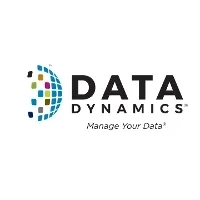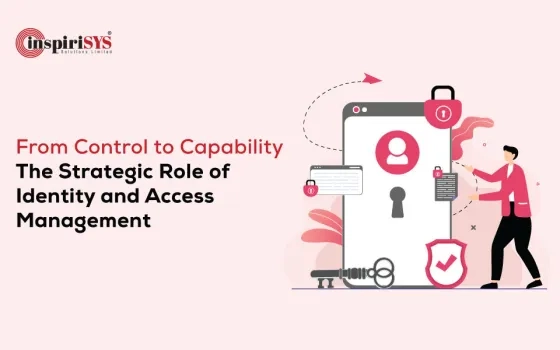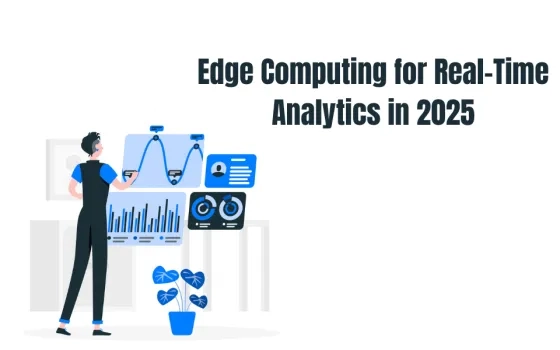Highlights:
- According to recent statistics, the number of connected IoT devices is expected to surpass 35 billion by 2025, with manufacturing being one of the top industries benefiting from this surge.
- The sheer volume of data generated by IoT devices can be overwhelming. Storing, managing, and processing this data requires robust infrastructure.
- Success in IoT isn’t merely about implementing smart devices and sensors across manufacturing facilities. The crux lies in effectively managing, curating, and utilizing the generated data.
- When it comes to pushing the envelope in IoT adoption, Microsoft Azure stands out. Azure’s comprehensive suite of IoT solutions empowers organizations to connect, monitor, and manage their IoT assets seamlessly.
Amid the digital revolution, the Internet of Things (IoT) concept has emerged as a transformative force, revolutionizing industries across the spectrum. With its profound impact on manufacturing, IoT has become the cornerstone of the Industry 4.0 movement. In this blog, we will delve into the evolution of IoT, the significance of IoT data, and how Microsoft Azure is at the forefront of driving its adoption, thereby reshaping the manufacturing landscape.
The Evolution of IoT: From Concept to Reality
Internet of Things (IoT) emerged as a visionary idea in the late 20th century, when interconnected devices seemed like something straight out of science fiction. The notion of everyday objects communicating with each other, sharing data, and collaborating to enhance our lives was a futuristic concept that captivated the imagination of innovators and thinkers. It was a tantalizing glimpse into a world where technology could transcend its conventional boundaries and weave itself into the fabric of our daily existence.
As time passed, this visionary concept gradually transformed into a tangible reality. The groundwork for IoT was laid with the development of the first networked devices that could communicate with each other. These early experiments and prototypes paved the way for an interconnected ecosystem of devices, sensors, and machinery.
Fast forward to today, and the vision of IoT has not only materialized but has transformed into a dynamic network that spans across industries and sectors. The emergence of smart devices, sophisticated sensors, and advanced communication protocols has given birth to a new era of connectivity. This era, often referred to as Industry 4.0, signifies a paradigm shift in manufacturing, where digital technologies are seamlessly integrated into every facet of the production process.
IoT has catalyzed this transformation by serving as the linchpin that connects physical devices with digital systems. It’s no longer just about individual devices; it’s about creating an ecosystem where devices, sensors, machines, and people collaborate in real time, exchanging information, insights, and instructions. This symbiotic relationship between the physical and digital realms redefines how industries operate, how products are manufactured, and how businesses interact with customers.
The evolution of IoT from a far-fetched concept to an integral component of Industry 4.0 underscores the relentless march of technological progress. It demonstrates humanity’s capacity to turn imagination into innovation, transcending boundaries and unlocking new possibilities. As IoT continues to evolve, it will undoubtedly shape our world, enhancing efficiency, driving innovation, and propelling us into a future where the lines between the physical and digital realms are blurred. The potential for transformative change knows no bounds.
IoT Data: The Crown Jewel of Industry 4.0
Amid the bustling world of IoT devices, sensors, and interconnected machinery, a treasure trove holds immense potential – IoT data. This data isn’t just about the sheer volume it generates; its true value lies in its capacity to illuminate the path toward unprecedented insights and data-driven decision-making. As the waves of Industry 4.0 reshape the manufacturing landscape, the judicious utilization of this data sets the stage for a new era of operational excellence and innovation.
IoT data is like a diamond in the rough, waiting to be unearthed and polished to reveal its brilliance. The data generated by countless IoT devices offers a glimpse into the intricacies of manufacturing processes, the behavior of equipment, and the performance of systems. But its significance doesn’t stop at the raw numbers; the ability to discern patterns, detect anomalies, and forecast trends truly sets this data apart.
In the modern business landscape, data isn’t just a commodity; it’s a strategic asset. Organizations invest heavily in data analytics and business intelligence to extract actionable insights from their data reserves. With its real-time nature and granularity, IoT data has positioned itself as a cornerstone of this data-driven revolution. From predicting maintenance needs and optimizing supply chains to improving quality control and enhancing customer experiences, the applications of IoT data are boundless.
Let’s put some numbers behind this phenomenon. A McKinsey report indicates that the economic impact of IoT data could be anywhere from $3.9 trillion to a staggering $11.1 trillion annually by 2025. This isn’t just a blip on the radar; it’s a seismic shift in how industries operate and how value is created. However, it’s imperative to recognize that the mere act of collecting data is just the beginning. The true transformative potential lies in our ability to harness, analyze, and translate this data into meaningful insights that drive strategic decisions.
As we stand at the precipice of a data-driven future, it’s clear that IoT data is more than just a byproduct of interconnected devices – it’s the lifeblood of Industry 4.0. The ability to extract value from this data isn’t just an option; it’s necessary for survival and growth in an era where data is the currency of progress. Let’s dive deeper into this topic.
Beyond Hype: Defining IoT Success
As mentioned above, the heart of IoT’s impact resides in how organizations manage, curate, and unleash the potential of the vast sea of data it generates. It’s not about the number of sensors or devices you deploy; it’s about how effectively you convert that data into actionable insights.
In an era where data drives decisions, the ability to harness and capitalize on IoT data is a distinguishing factor that separates thriving businesses from those merely caught up in the hype. The sheer volume of data generated by IoT devices is staggering – an avalanche of information that can transform processes, enhance customer experiences, and propel innovation. However, a strategic approach to data management is imperative to tap into this potential.
Imagine a scenario where businesses invest heavily in IoT devices and infrastructure yet struggle to derive value from the generated data. This scenario isn’t just a possibility; it’s a harsh reality for those that overlook the critical role of data management. Without an effective strategy for data collection, storage, analysis, and application, the transformative power of IoT remains locked behind a barrier of unstructured information. The journey from data collection to actionable insights is a nuanced one. It involves employing advanced analytics tools and machine learning algorithms and fostering a culture that values data-driven decision-making. Organizations that master this journey unlock the potential to enhance efficiency, optimize processes, and gain a competitive edge in the market.
Effective data management involves curating the IoT data, structuring it for analysis, and seamlessly integrating it into business processes. It’s about enabling cross-functional analytics that provide insights to not just one department but to every facet of the organization. Whether it’s optimizing production processes, enhancing supply chain efficiency, or even shaping product development, the value of IoT data transcends silos.
In this landscape, those who truly succeed are the ones who see IoT as more than a buzzword – they see it as a strategic imperative. They recognize that if they can’t curate their IoT data and leverage it for business intelligence and cross-functional analytics, their investment in IoT becomes nothing more than a fad. To ensure IoT success, businesses must cultivate a culture that champions data-driven decision-making. It fosters collaboration between data scientists, engineers, analysts, and business leaders to extract insights that fuel innovation and growth. This requires not just technology but a mindset shift that places data at the heart of strategic planning and execution.
The need for effective IoT data management will only intensify as the digital landscape evolves. The businesses that understand this reality that unlock the potential of their IoT data through meticulous curation and strategic application are the ones that will shape the future of Industry 4.0. So, while IoT devices and sensors form the foundation, the data they generate constructs the edifice of success.
Click here to take a deep dive into Real-Life Examples of Manufacturing Companies Leveraging IoT Data





























